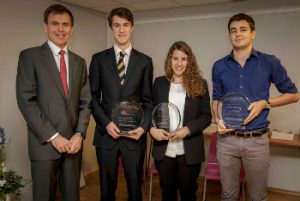We will be supplying updates on our four ship science group design projects during the year. These projects are relatively unique within UK Maritime courses in their experience for final year students in actually building and testing and getting essential real world experience .
Modern racing boats don’t just sail, they fly. With the technological advancements of the America’s Cup over the past 5 years the sport of sailing is beginning to transition from an old man’s activity to F1 on water. The America’s Cup has turned into a fast paced spectator sport with short races packed with tight manoeuvres and speeds in excess of 30 knots. The Southampton Hydro Aero Research Catamaran (SHARC) looks to bring this thrill of foiling to the general sailing community as well as providing a research platform for use by the University.
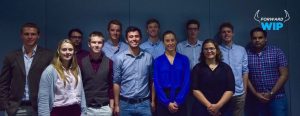
Over the next six months our team will be designing and manufacturing three key components that will allow us to convert a 2004 Nacra F18 into a Hydrofoiling machine. The first component will be the hydrofoils themselves. Design work has already begun and we have been using Computational Fluid Dynamics to determine the lift and drag associated with different designs, this will ensure that our foils will be able to lift the boat out of the water. The second component is an adaptable pod system for housing the foils. This key element once built will allow us to attach our foils to not just our F18 but to any small catamaran. This will enable anyone with a small catamaran to experience foiling. The design surrounding this pod will have to do a great deal of research into the forces surrounding it to ensure the materials and structure will not fail. The final aspect of our project will be the installation of a data acquisition system that will allow researchers and sailors to analyse the performance of the boat. This will involve laying up strain gauges within the foils and pods to allow us to observe effects such as tip deflection while sailing. This sort of information will be fed back to a central data logger which will then store data as well as feed it wirelessly to a laptop for live performance feedback.
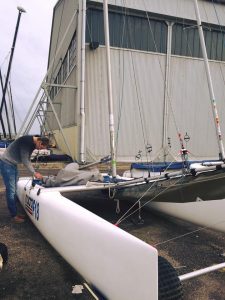
With this project we look to inspire more of the sailing community to experience hydrofoiling as well as nurturing their interest in STEM subjects. By providing the University with a functional hydrofoiling research platform further studies can be undertaken to advance hydrofoiling design and technology for use throughout the sailing community and within the America’s Cup.
Follow our project on facebook: https://www.facebook.com/SHARCGDP/?fref=ts
All posts by Stephen Turnock
Women in Science and Engineering
Free biscuits was a big draw for the recent Ada Lovelace day events hosted by FSI in the café in B176. This was one of many events on campus encouraging staff and students to promote opportunities in STEM subjects and challenge traditional attitudes.
Ada Lovelace Day is an international celebration of the achievements of women in science, technology, engineering and maths (STEM).
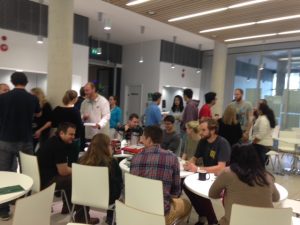
The University-wide Women in Science, Engineering and Technology (WiSET) group is working on a massive challenge to celebrate the women in our STEM subjects by trying encourage ALL our staff (men and women!) to stop for five minutes and have a biscuit break!
Visit of Assembly of European Regions
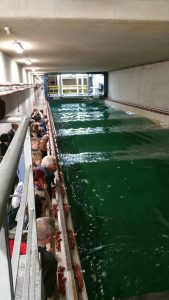
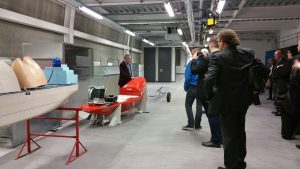
 As part of their Autumn plenary hosted by Hampshire County Council delegates to the Assembly of European Regions recently visited the Boldrewood Innovation Campus. FSI staff and students conducted a series of demonstrations of the new towing tank, tours of the laboratories including the maritime robotics as well as the Autonomy command and control vans. Feedback from the delegates was very positive – they were impressed with the campus as a whole and the close cooperation of LR and the University in developing the facilities.
As part of their Autumn plenary hosted by Hampshire County Council delegates to the Assembly of European Regions recently visited the Boldrewood Innovation Campus. FSI staff and students conducted a series of demonstrations of the new towing tank, tours of the laboratories including the maritime robotics as well as the Autonomy command and control vans. Feedback from the delegates was very positive – they were impressed with the campus as a whole and the close cooperation of LR and the University in developing the facilities.
Unsteady hydrodynamics in Glasgow
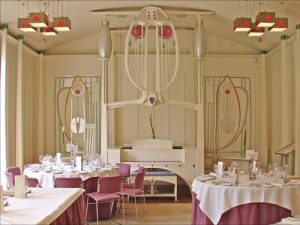

Francesca Siracusa and Marion James, PhD students at the Fluid-Structure Interaction group, went to Glasgow on the 26-28th August 2015 to attend the 9th International Workshop on Ship and Marine Hydrodynamics. Several countries were represented including a large community of researchers from Asia thanks to the workshop roots.
Francesca presented her first conference paper on 2D flow around stationary side-by-side square columns at low Reynolds number. Marion’s work on transitional flow of spheres at the free surface.
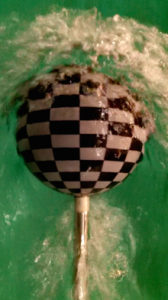
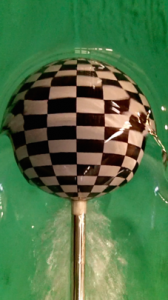
Hydroelasticity 2015 in Split, Croatia
From September 16th – 19th the University of Southampton took part in the 7th International Conference on Hydroelasticity in Marine Technology (Hyel 2015). 90 participants from international universities, research institutes and companies gathered in Split, Croatia for the 4 day event. 57 papers were presented overall, of which 6 were presented by the 5 attending University of Southampton researchers and postgraduate students.

The conference, organised jointly by Bureau Veritas and University of Zagreb, focused on the practical application of hydroelasticity methods to a range of issues including wave-induced global vibrations, sloshing, slamming, vortex induced vibrations, Very Large Floating Structures and aquaculture structures. The conference venue also gave the opportunity for watching the many interesting vessels visiting Split.

The papers presented by the FSI group discussed a diverse range of topics. The use of Rapid Prototyping for flexible model construction for towing tank testing was presented by Dr Jon Downes, whilst Dr Sally Bennett presented research on both the effect of sequences of abnormal waves on the global loads experienced by a naval frigate, and the hydroelastic modelling of damaged ships. Postgraduate student Josef Camilleri presented his research on the two-dimensional numerical modelling of slamming impact loads on high speed craft. Arun Lakshmynarayanana demonstrated coupled fluid-structure interactions to model the three-dimensional dynamic behaviour of a ship in waves. Linh Nguyen presented an investigation into the flow around two circular cylinders in tandem with 2D RANS which is a collaborative work between FSI and the Energy and Climate Change Group at the University of Southampton. All contributions from Southampton prompted interesting discussion and debate both during the sessions and the coffee breaks!
Progress in ship and offshore structures at 19th ISSC
FSI academics Professor Penny Temarel and Dr Jon Downes attended the 19th International Ship and Offshore Structures Congress (ISSC 2015) which was held in Cascais, Portugal 6-10th September 2015.
The congress is a forum for the exchange of information by experts undertaking and applying marine structural research. The aim of the ISSC is to facilitate the evaluation and dissemination of results from recent investigations, to make recommendations for standard design procedures and criteria, to discuss research in progress and planned, to identify areas requiring future research and to encourage international collaboration in furthering these aims. Ships and other marine structures used for transportation, exploration and exploitation of resources in and under the oceans are in the scope of the ISSC.
FSI academics significantly contributed the writing of the following Committee Reports:
Penny Temarel (Committee Chairperson) – Committee I.2 Loads.
Yeping Xiong – Committee II.2 Dynamic Response
Jon Downes – Committee IV.I Design Principles and Criteria
James Blake – Committee V.7 Structural Longevity
The 20th Congress will be held in 2018 jointly between Belgium and the Netherlands and FSI academics were elected to the following committees:
Jon Downes – Committee II.2 Dynamic Response
James Blake – Committee V.7 Structural Longevity
Sailing success
Ship science student Michael Beckett has had a successful summer winning Silver in the U21 worlds in the Netherlands in August. He is a British Sailing Team Podium potential sailor and juggling this with the challenges of studying to become a Naval Architect is an impressive achievement. Alongside his studies he has also contributed to Ship Science’s outreach activities helping in the spring with a session we supported for a science week activity at a local school in Alton. We welcome approaches from schools in our region wishing to learn more about career opportunities in the maritime sector. We are particularly keen to engage with those who might not normally consider engineering as a potential career.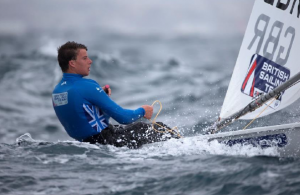
Go NUTTS 2015 in CORTONA, ITALY
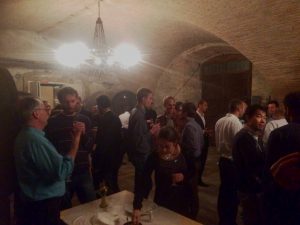
In September, the 18th Numerical Towing Tank Symposium (NuTTS ’15) took place in Cortona, Italy. Around 60 people attended the conference from various universities, institutes and companies around the world — particularly from Europe and Japan. The University of Southampton was well-represented by five researchers. The annual conference focuses on the development and application of Computational Fluid Dynamics (CFD), specifically in the maritime industry.
The key topics this year were overset-mesh techniques, cavitation modelling, acoustic analysis and propeller-hull interactions. There were also interesting presentations on turbulence modelling and free-surface modelling. Some challenging applications were presented: including analysis of fluctuating updrafts above helidecks; drag predictions of dolphin-inspired blubber coatings; and performance analysis of semi-displacement luxury yachts.
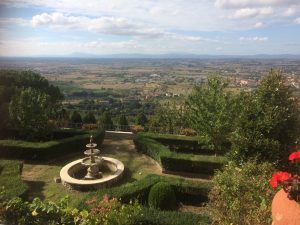
Three papers were presented by the FSI group. Joseph Banks presented work on experimental and computational methods for bend-twist coupled foils. Gabriel Weymouth demonstrated real-time, intuitive CFD based on Immersed Boundary methods. Artur Lidtke presented a joint paper with MARIN (Maritime Research Institute Netherlands) on propeller acoustics based on the Ffows Williams-Hawkings equations. The contributions from Southampton were well received and inspired lively conversation.
Cruising the Southampton Waters
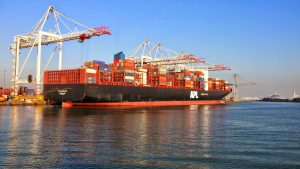 Staff and students of the ship science and maritime engineering courses were joined by researchers and PhD students of fluid structure interactions to celebrate the end of a busy week 1 by cruising Southampton water. The weather for the early evening was a perfect crisp autumnal one with barely a cloud in site.
Staff and students of the ship science and maritime engineering courses were joined by researchers and PhD students of fluid structure interactions to celebrate the end of a busy week 1 by cruising Southampton water. The weather for the early evening was a perfect crisp autumnal one with barely a cloud in site.
The ferry departed at 16:00 from the Blue Funnel Terminal at Ocean Village and sailed around Southampton Waters, the convergence of rivers Itchen and Test, and further on to the Container Terminal.
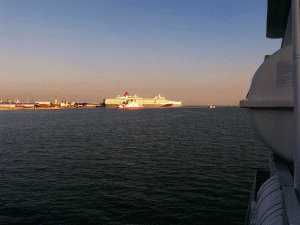
People aboard had a vantage point for viewing Cruise Ships, and also managed to take in container ships being loaded/unloaded and sail past the point where the Titanic was once anchored. It was an opportunity for the new students to meet the whole group. In all 170 people attended.
Safer life boat evacuation
An external article in futurenautics (see page 44 and onwards, along with a mention in the editorial) is based on the research of our Ship Science student Alex Iley who was a recipient of a DNV GL Young professional of the year in the ‘safer’ category. In his work he examined the practicalities of of a lifeboat based evacuation using amongst other things the people flow modelling package ‘Mass Motion’. He found that making often quite small changes to the on-board environment could significantly reduce the time to embark passengers onto lifeboats. The article itself is well worth a read but many congratulations to Alex for being such a worthy winner of the award.
